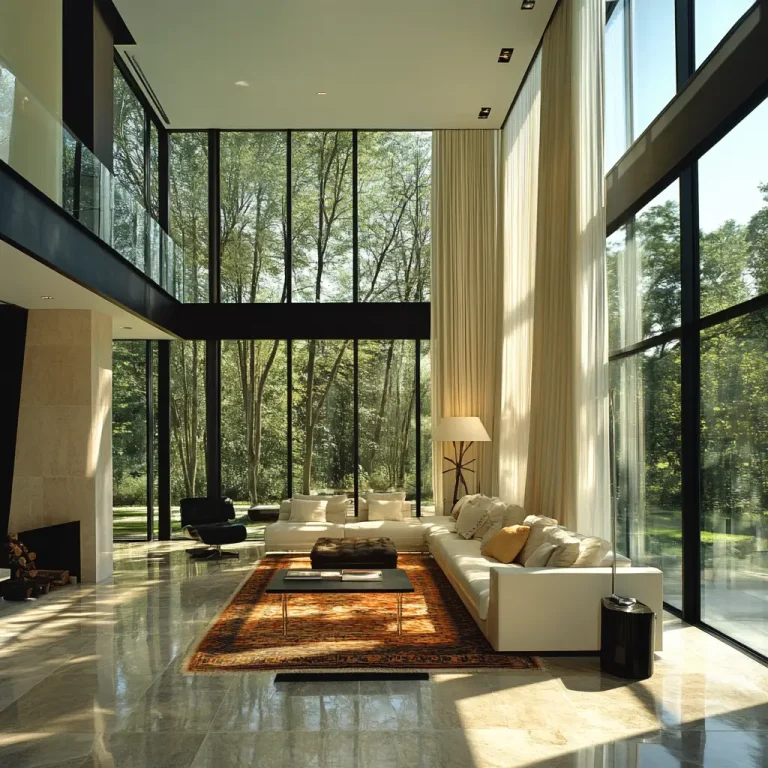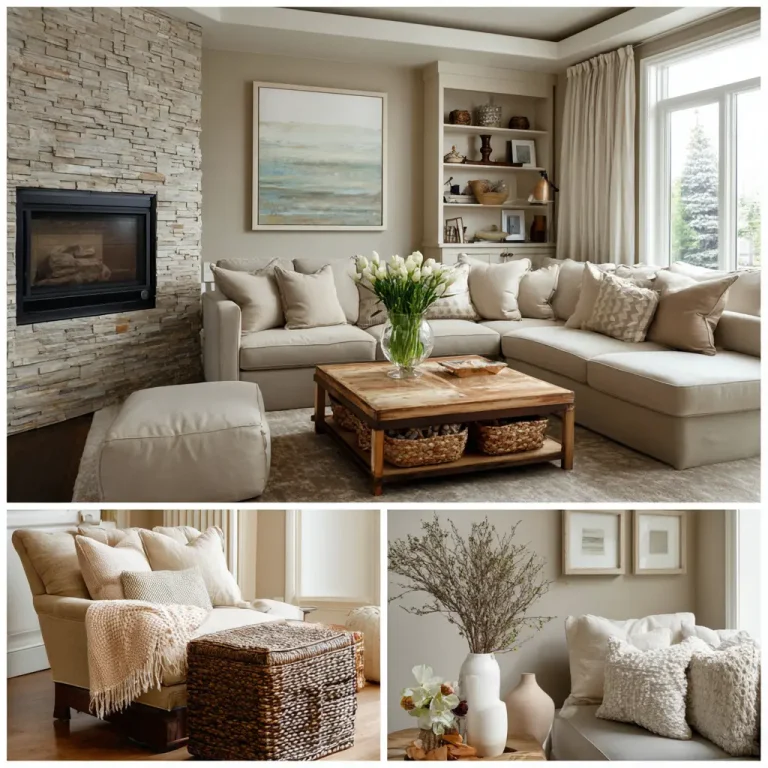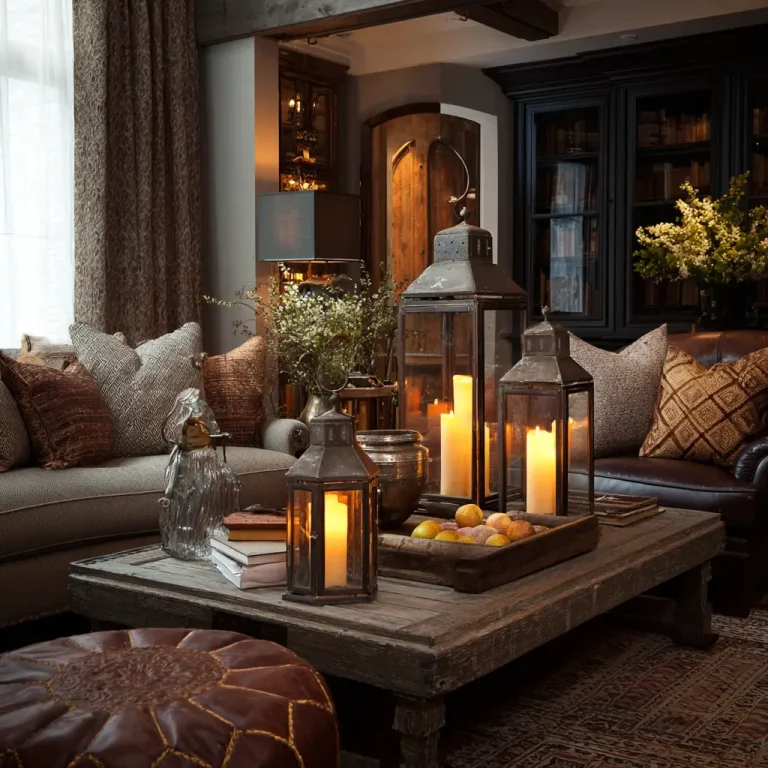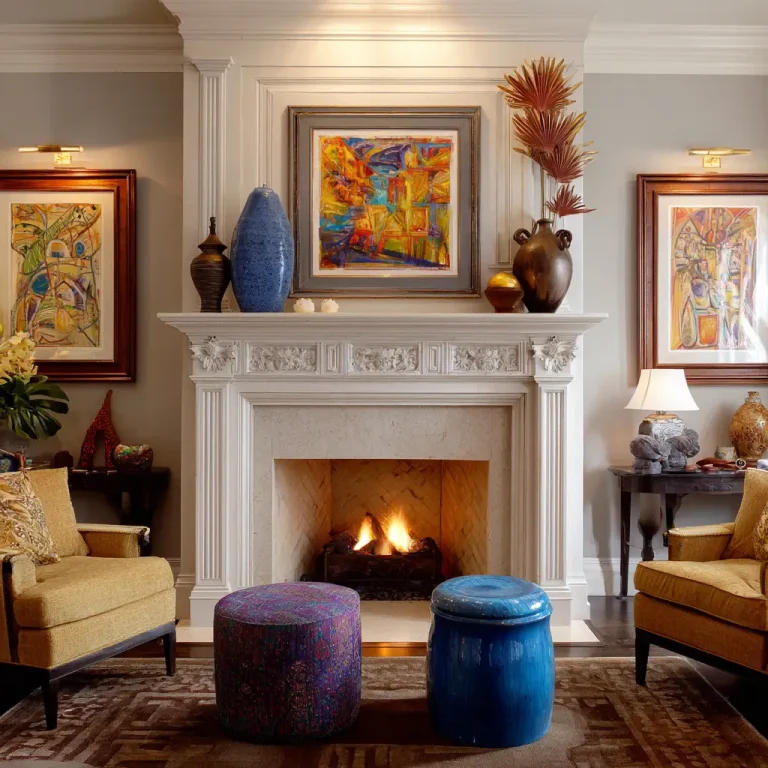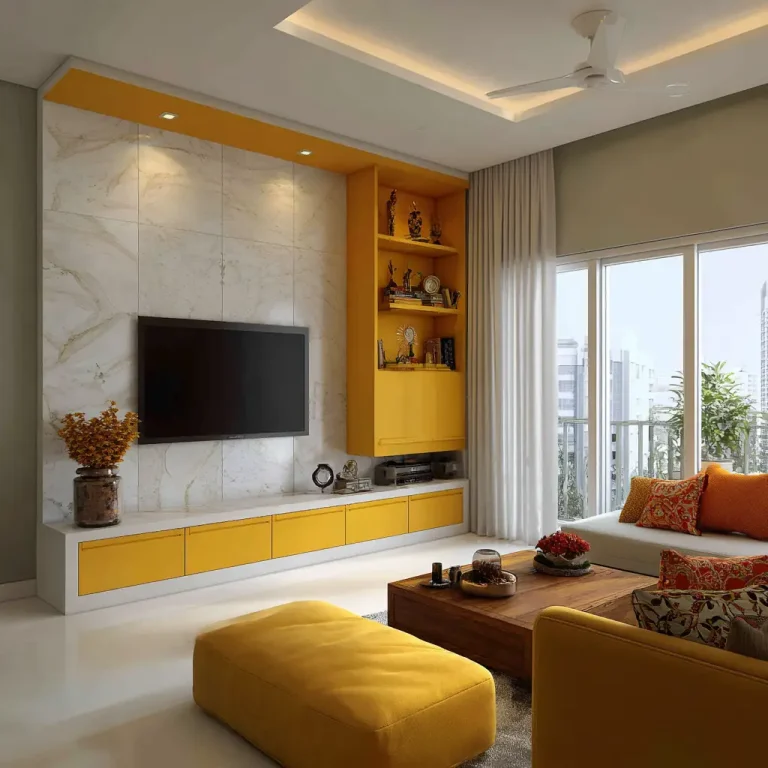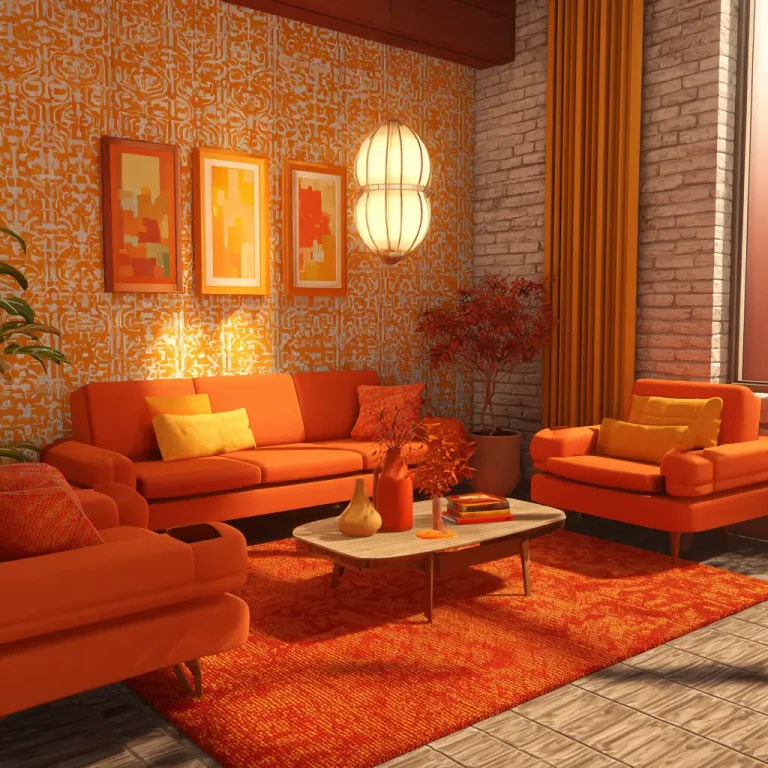20 Latest Living Room Designs to Transform Your Space
The living room isn’t just another room—it’s the soul of your home. It’s where stories unfold, guests gather, and evenings unwind. Whether you’re refreshing your space or embarking on a full redesign, these 20 modern living room ideas are here to inspire with warmth, creativity, and character.
1. Earthy Tones and Natural Materials
The push toward sustainability and wellness has brought earthy tones to the forefront. Think terracotta, ochre, sage green, and soft browns—colors that calm the senses and evoke nature. These hues pair beautifully with natural materials like jute rugs, oak wood tables, and linen curtains. The result is a soothing, lived-in feel that brings a quiet sophistication to any space.
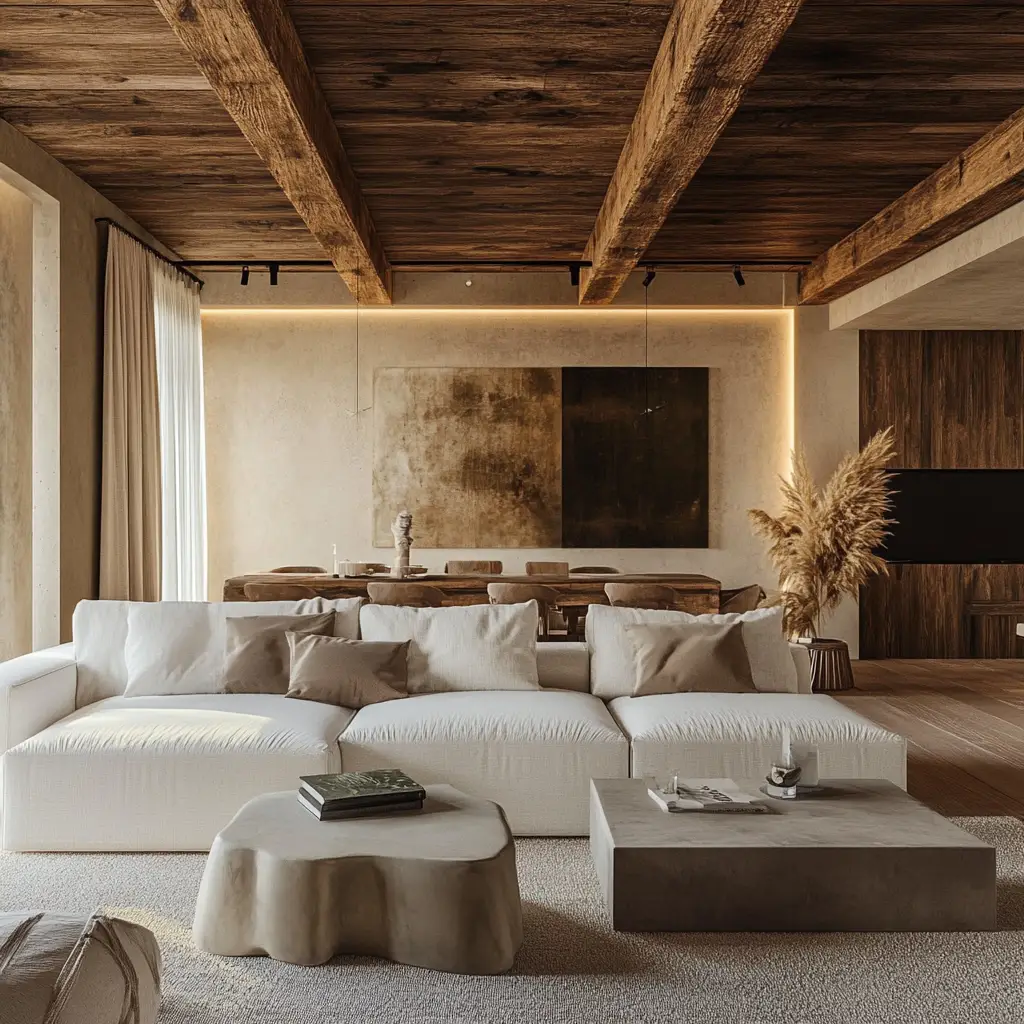
2. Japandi Minimalism
Japandi is the elegant union of Japanese and Scandinavian aesthetics—two styles that favor simplicity, harmony, and functionality. This look features neutral tones, low-profile furniture, and purposeful decor. Imagine a light wood coffee table beside a cream boucle sofa, all bathed in soft natural light. It’s about creating peace through space and leaving room for intentional living.
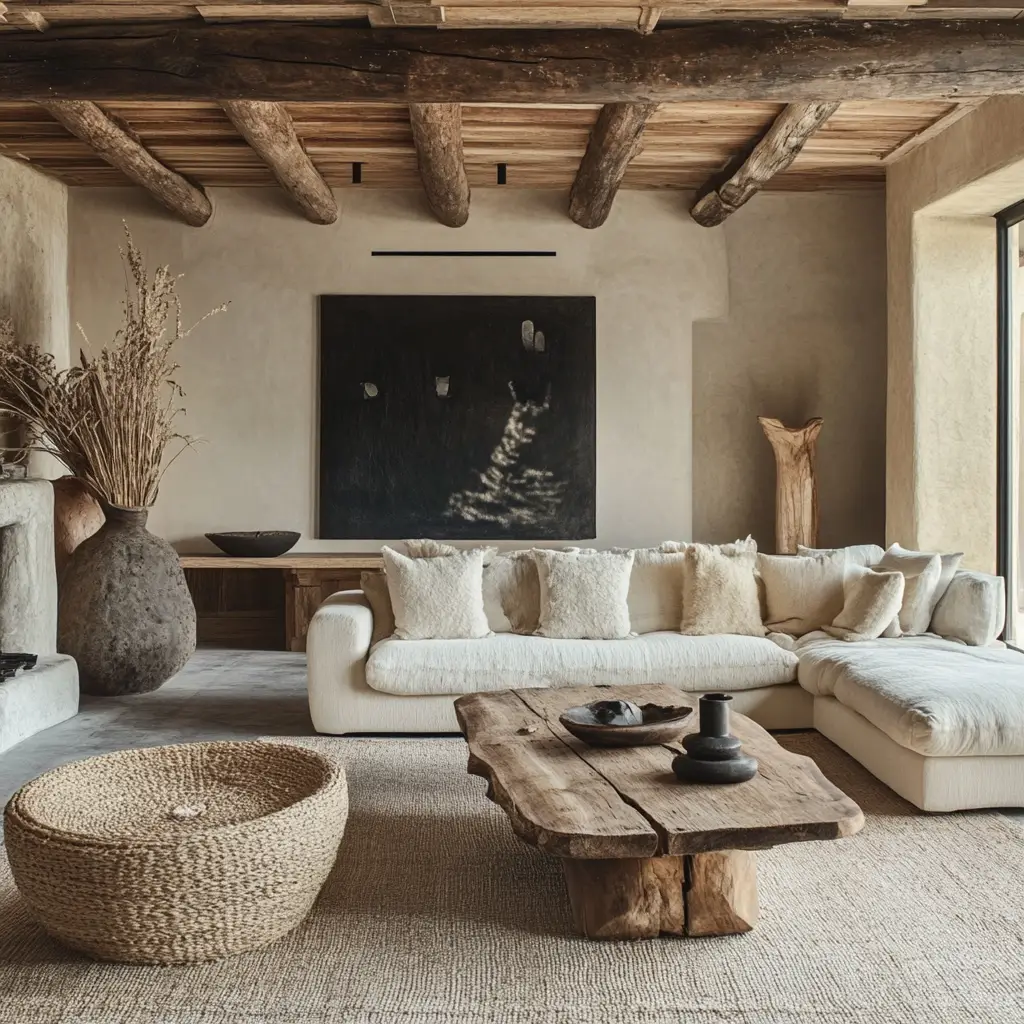
3. Curved Furniture
Straight lines are stepping aside in favor of gentle curves. From rounded-back armchairs to softly arched sofas, curves create a sense of flow and visual comfort. They also evoke a retro vibe reminiscent of the 70s, now modernized with plush fabrics like velvet and bouclé. In open spaces, these shapes break the monotony and make the room feel more inviting.
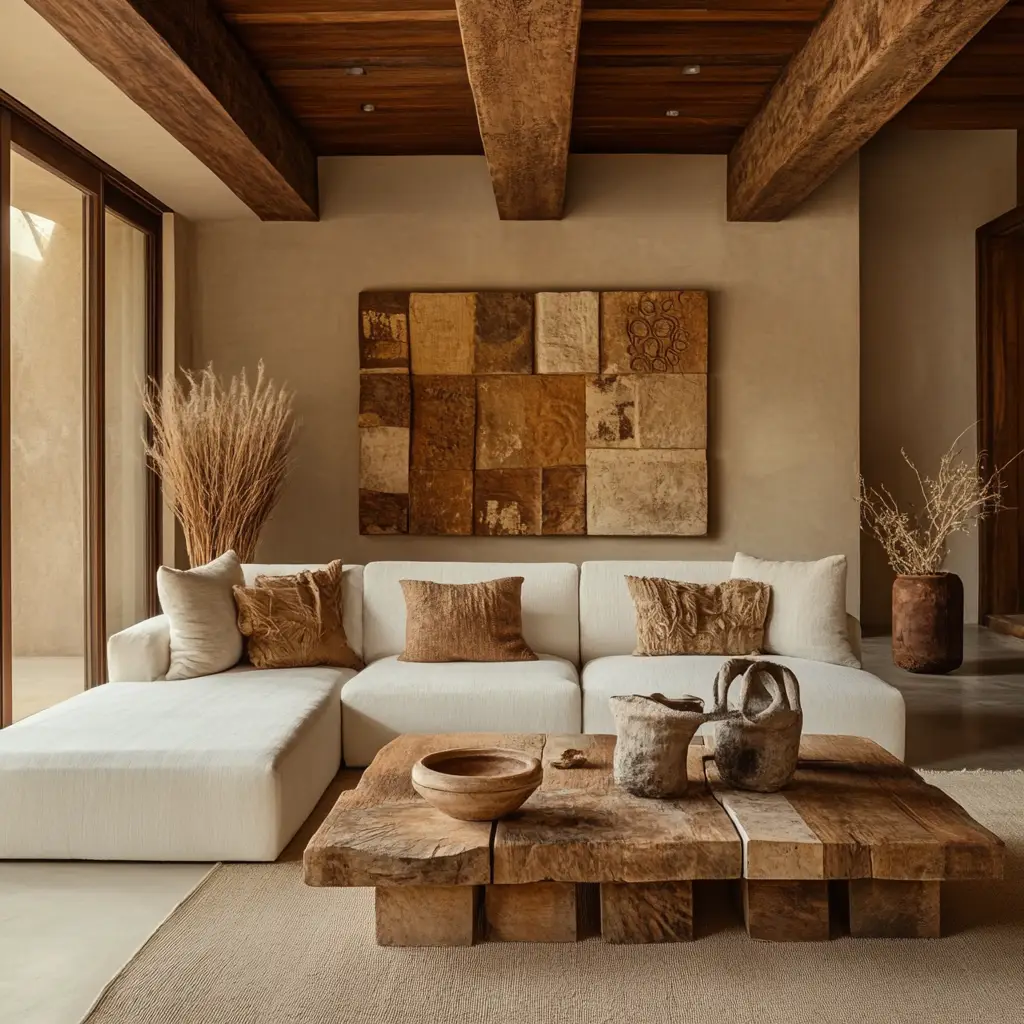
4. Textured Walls
Walls are no longer just a backdrop—they’re becoming focal points. Textured finishes like limewash, Venetian plaster, or wood paneling add depth and warmth. Whether you choose a subtle effect or a bold feature wall, texture adds personality without overwhelming the room. It’s an especially powerful tool in minimalist spaces, where every detail counts.
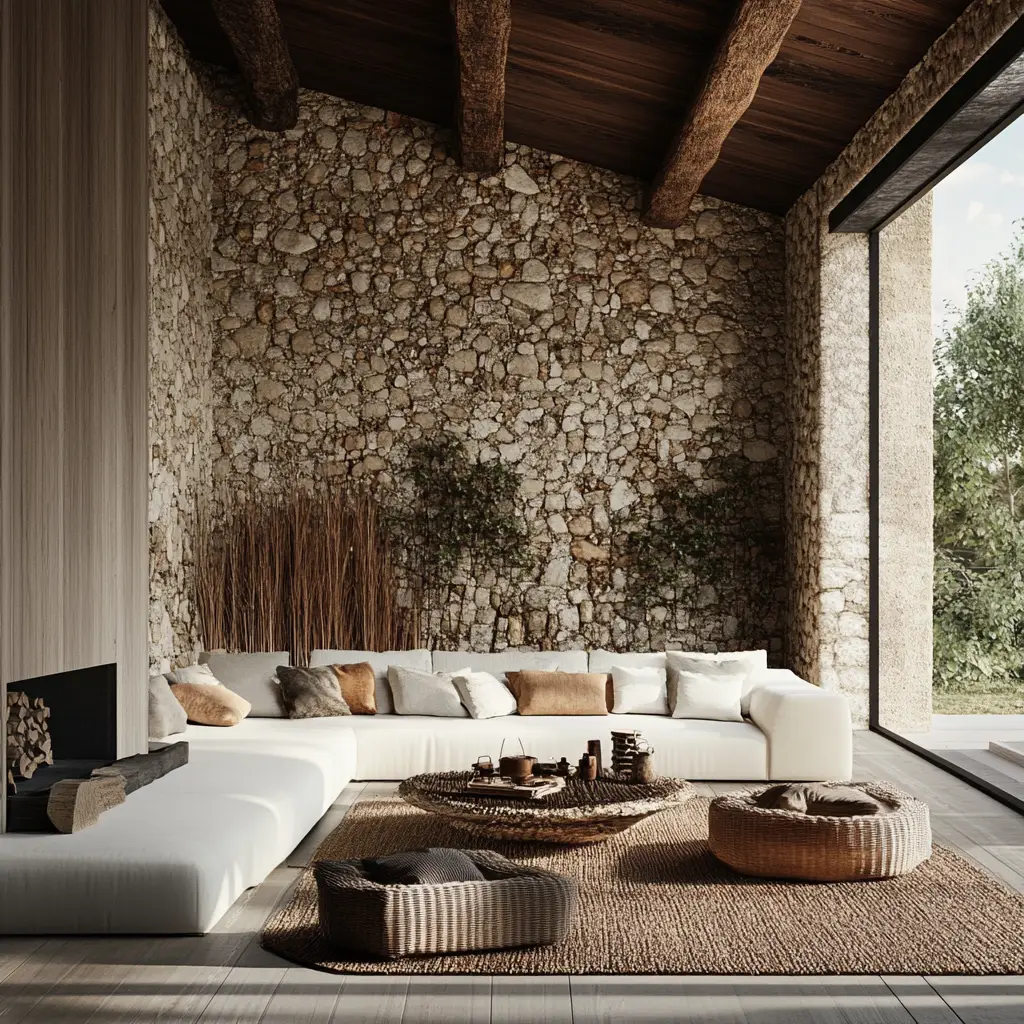
5. Biophilic Design
Biophilic design isn’t just a trend—it’s a movement. It focuses on connecting interior spaces to the natural world. By incorporating indoor plants, large windows, natural light, water elements, and raw materials like stone or wood, you can transform your living room into a calming, health-supporting environment that echoes the rhythms of nature.
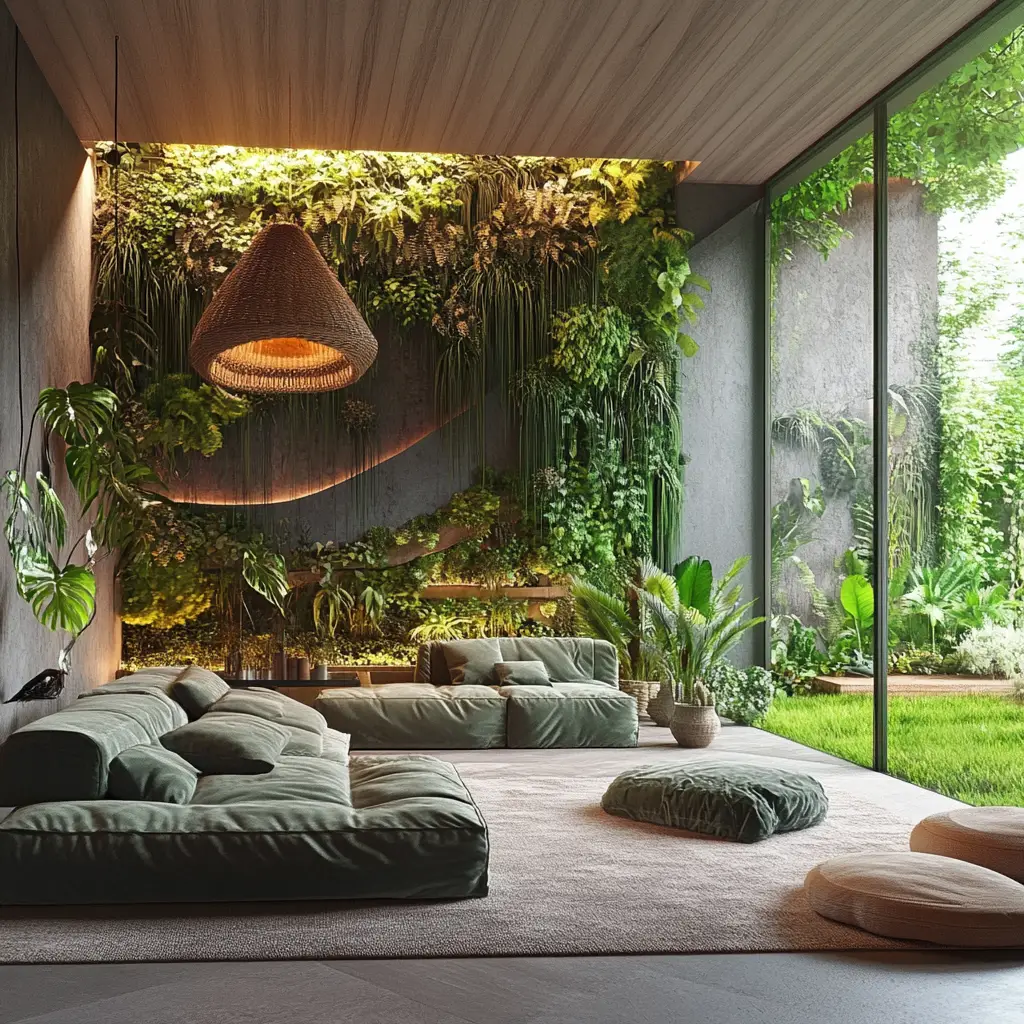
6. Vintage and Antique Accents
There’s a growing love for the past, and it shows in the resurgence of vintage and antique elements. Whether it’s a mid-century modern chair, a vintage rug, or a repurposed cabinet, these pieces add depth, authenticity, and a sense of story to your living room. Plus, they promote sustainability by reusing existing beauty rather than buying new.
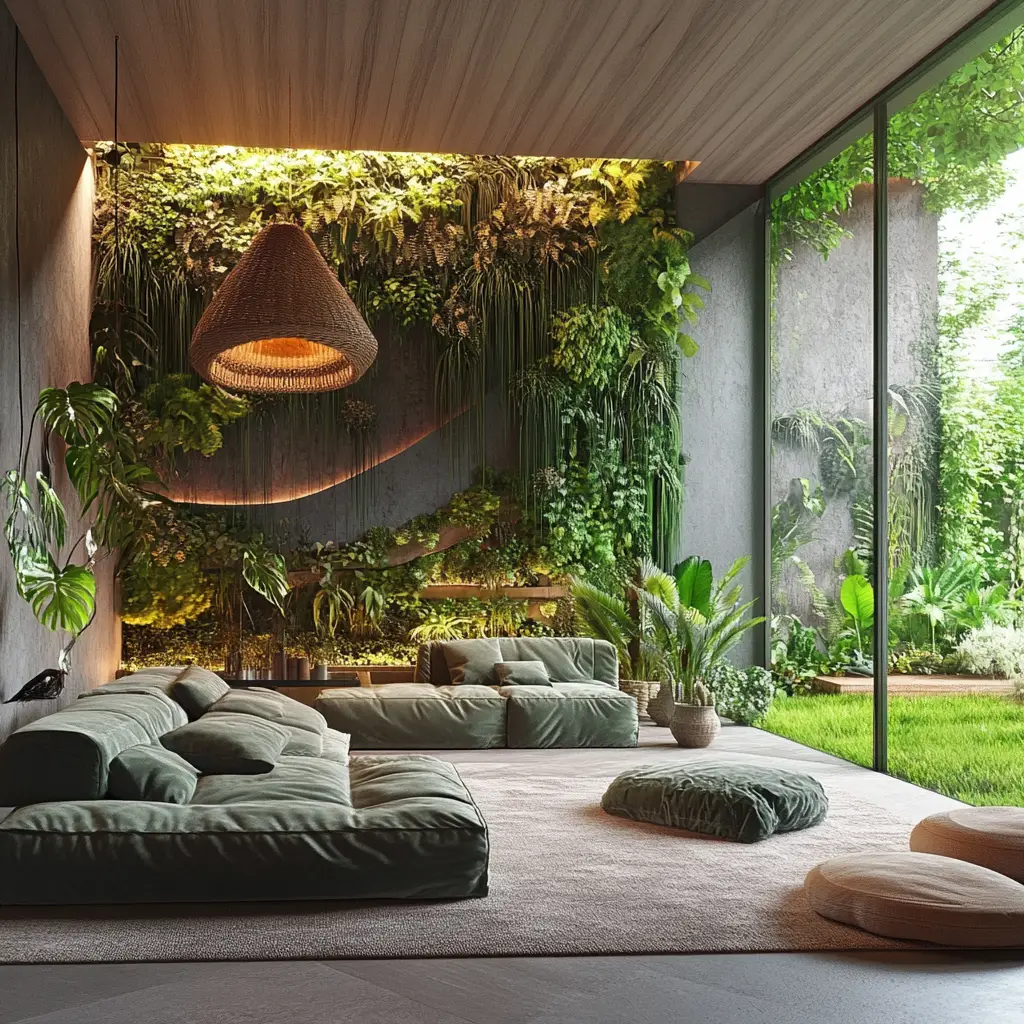
7. Multi-Functional Furniture
With space often at a premium, multi-functional furniture is a game-changer. Think of ottomans that open for storage, extendable coffee tables, or modular sofas that adapt to different layouts. These pieces make your living room smarter and more practical without sacrificing style. It’s ideal for small apartments or homes with open-plan living.
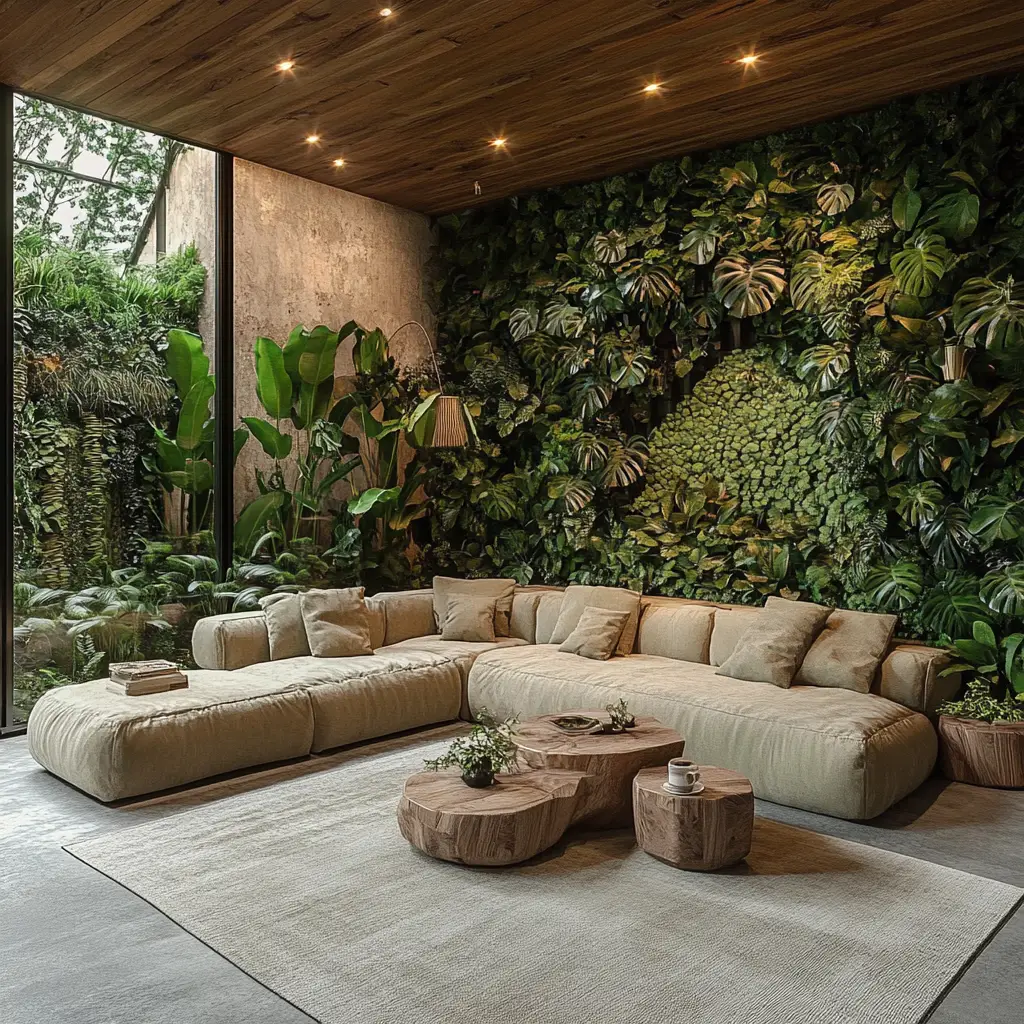
8. Moody Color Palettes
Rich, deep hues like navy, charcoal, emerald, and wine are making a comeback. These moody tones add drama and intimacy, especially when paired with plush textures like velvet or leather. Don’t be afraid to go dark on your walls—just balance with light floors, mirrors, and metallic accents to keep things open and refined.
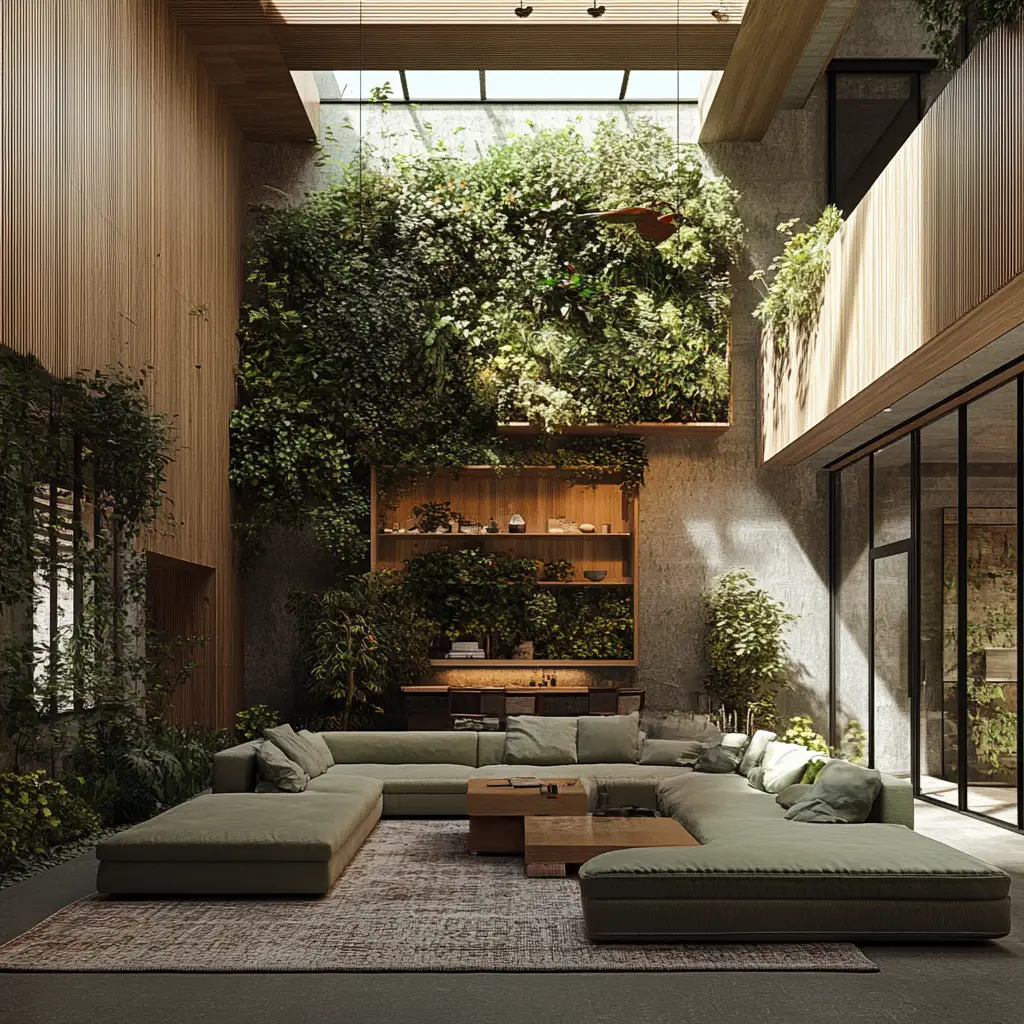
9. Maximalist Layers
Maximalism embraces color, pattern, and personal expression. It’s about layering textures, mixing design eras, and curating a space that feels lived-in and loved. Pile books on the coffee table, hang bold art, mix vintage with modern, and let your personality shine through. It’s not chaos—it’s curated abundance.
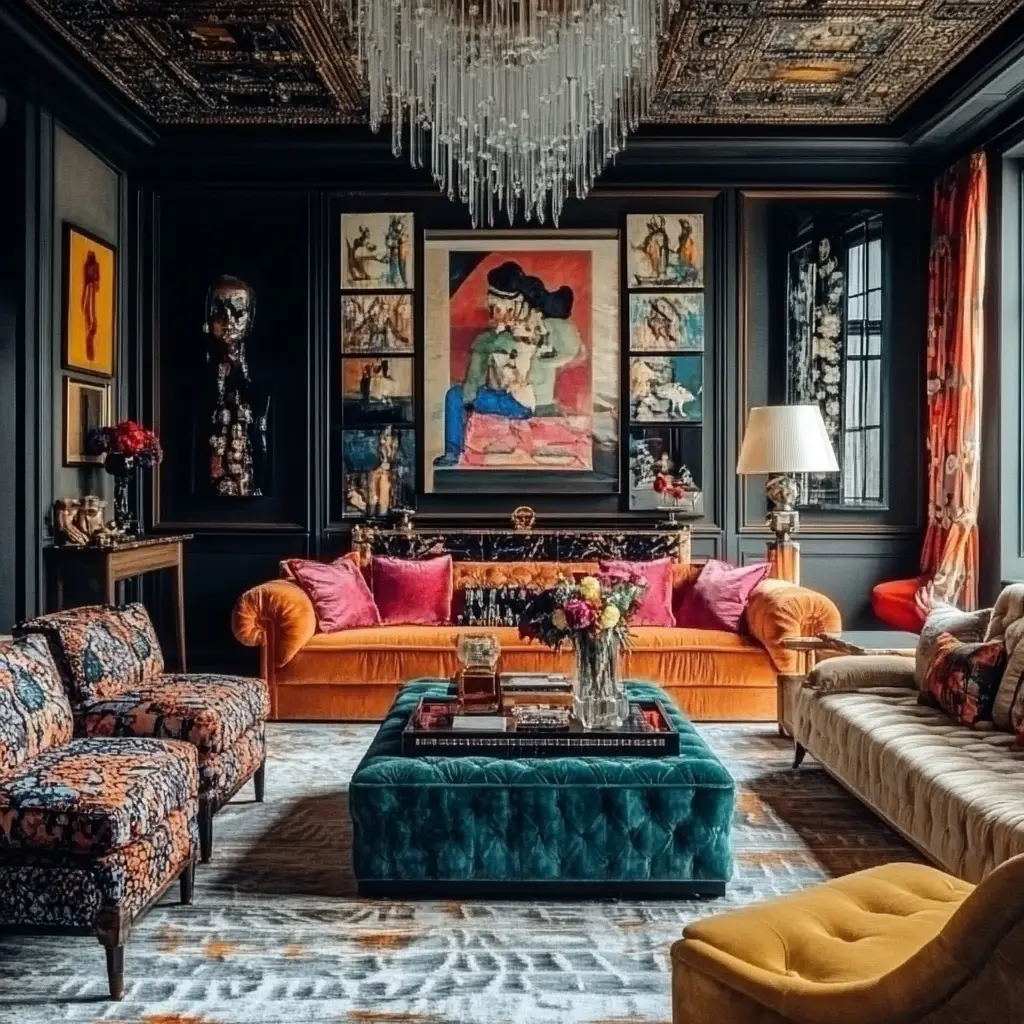
10. Open Shelving and Display Units
Instead of hiding things away, more people are embracing open storage to show off meaningful items. Wall-mounted shelves and open cabinetry let you display books, plants, art, and heirlooms, adding character to the space. The key is balance—arrange items by color, height, or material to keep it visually appealing rather than cluttered.
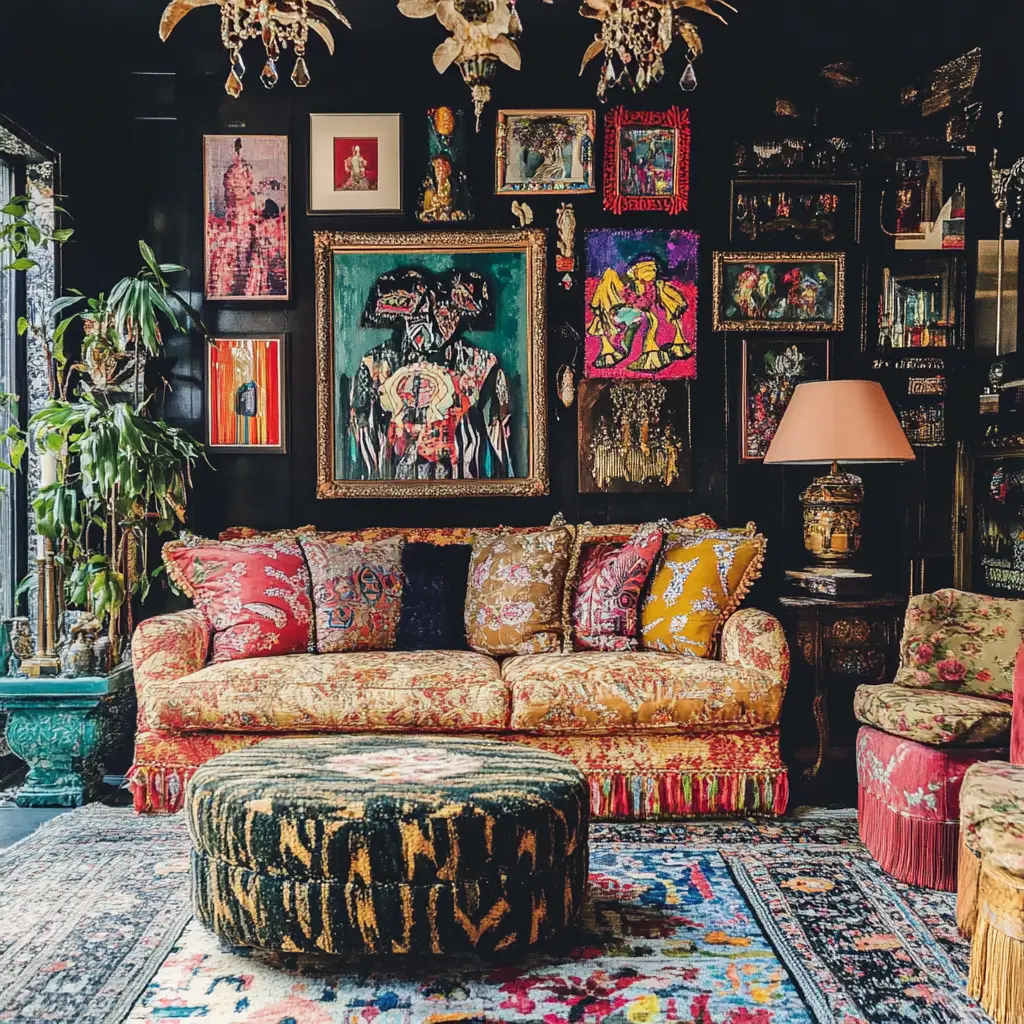
11. Smart Technology Integration
Technology is blending more seamlessly into modern design. From remote-controlled blinds to hidden speaker systems and integrated lighting, today’s smart living rooms combine convenience with style. Rather than competing with the décor, these elements are designed to be discreet and harmonize with your interior aesthetic.
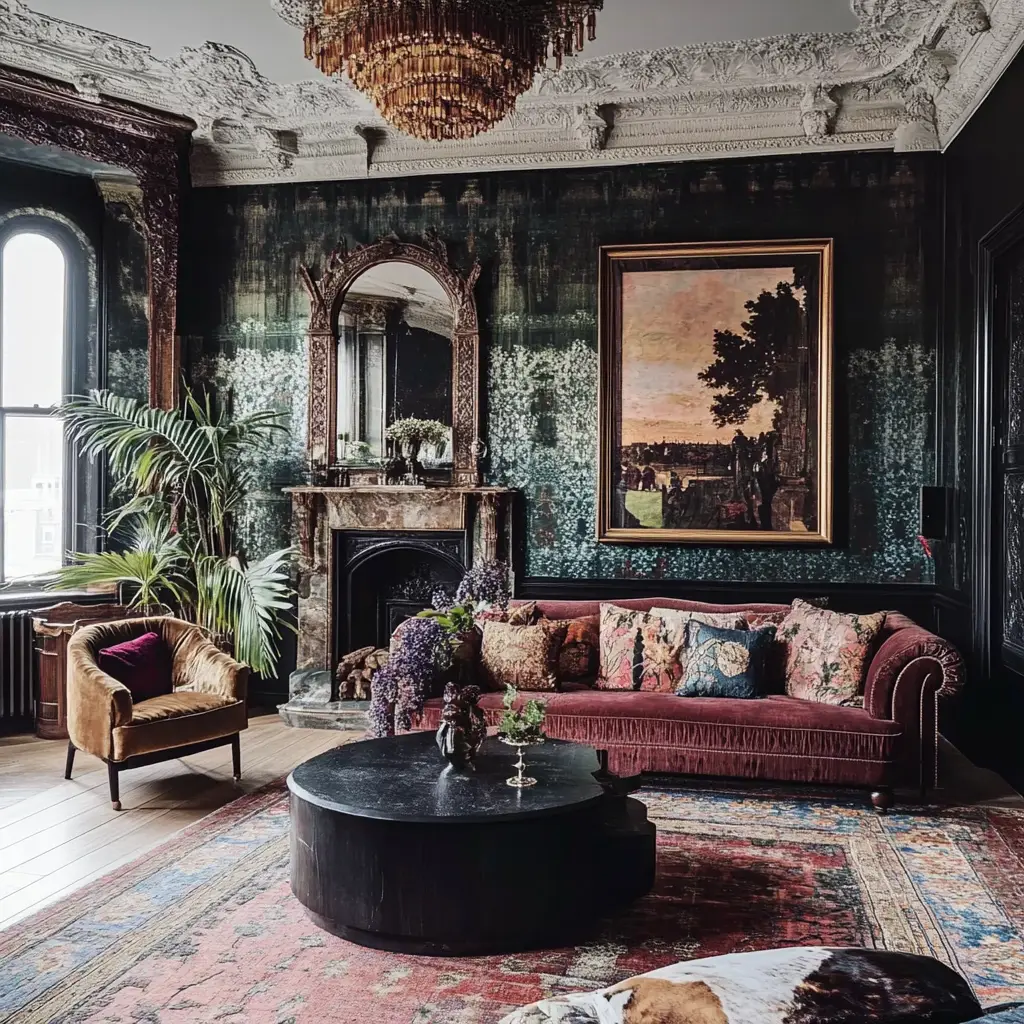
12. Statement Lighting
Lighting is no longer just functional—it’s becoming an art form. Oversized pendants, sculptural chandeliers, and asymmetrical floor lamps act as visual anchors in a room. They not only illuminate the space but also add shape, texture, and elegance. Good lighting transforms mood, especially when layered with ambient and accent options.
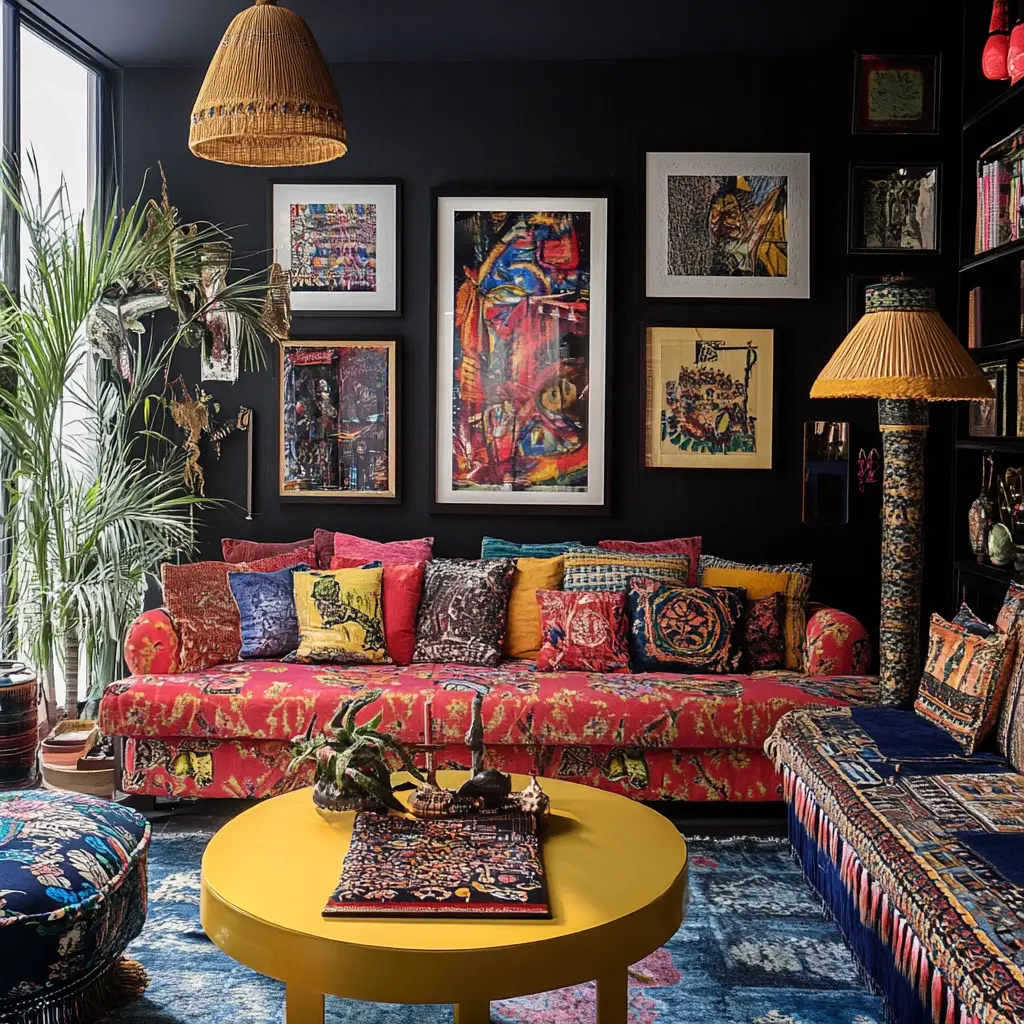
13. Sustainable and Ethical Decor
Homeowners are becoming more mindful of what they bring into their spaces. Furniture made from reclaimed wood, organic fabrics, and recycled materials is gaining popularity. It’s not just about aesthetics—ethical production practices and low-impact materials contribute to a better planet and a deeper emotional connection to the items in your home.
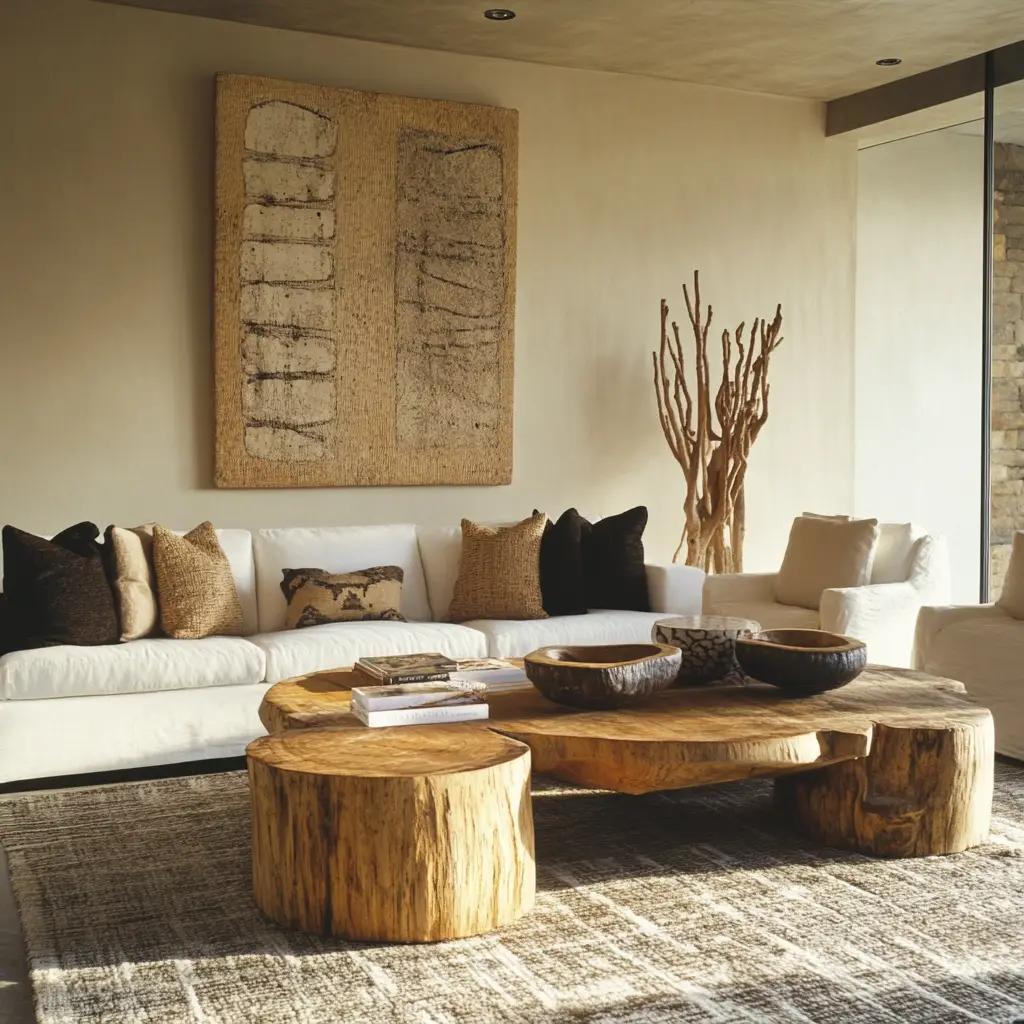
14. Layered Lighting
Rather than relying on a single ceiling fixture, designers are now layering light to create ambiance. Combine overhead lights with table lamps, wall sconces, and even candles. Each layer adds depth and function, allowing you to tailor the mood for different times of day or occasions.
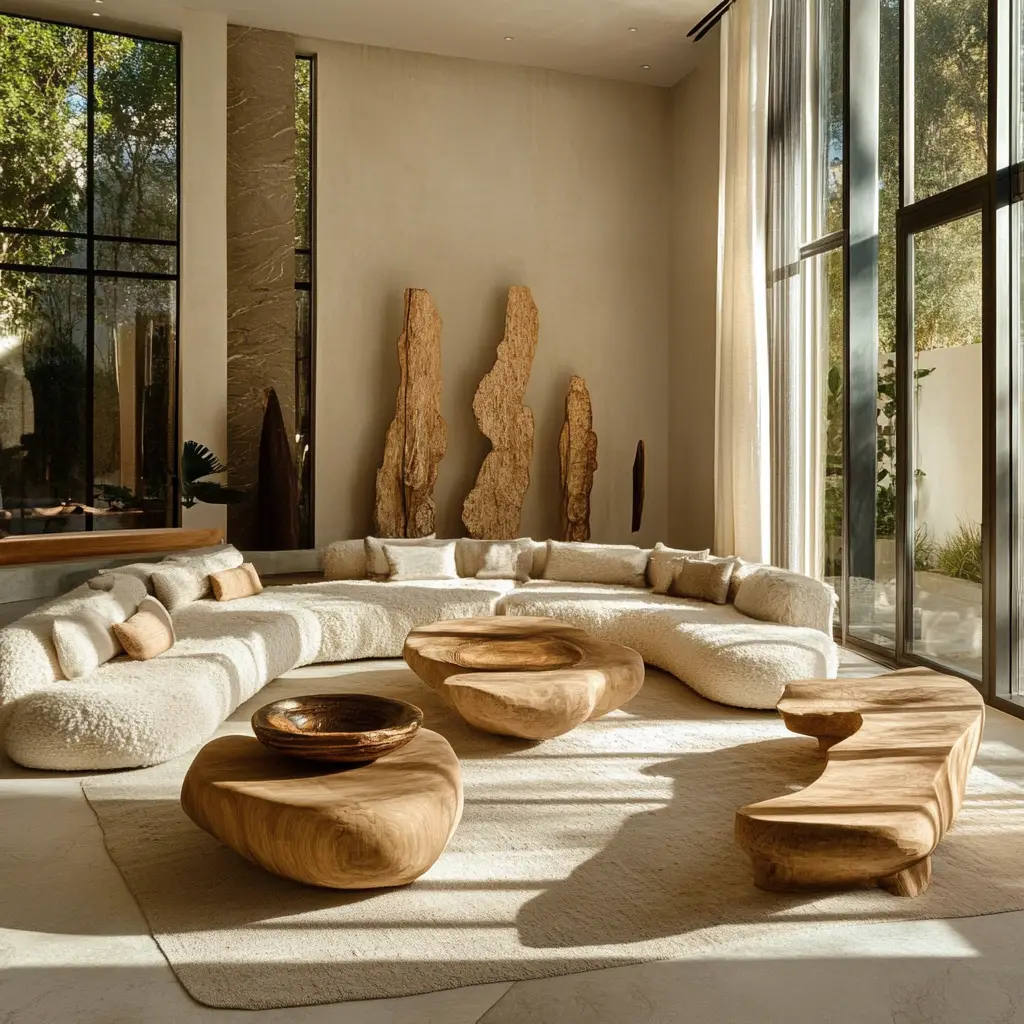
15. Soft Neutrals with Pops of Color
A neutral base offers versatility and a sense of calm, while vibrant accents can inject energy and personality. A cream sofa or pale wood floor sets the tone, while mustard cushions, emerald green vases, or a colorful rug add flair. This approach allows for easy seasonal updates without redoing the whole room.
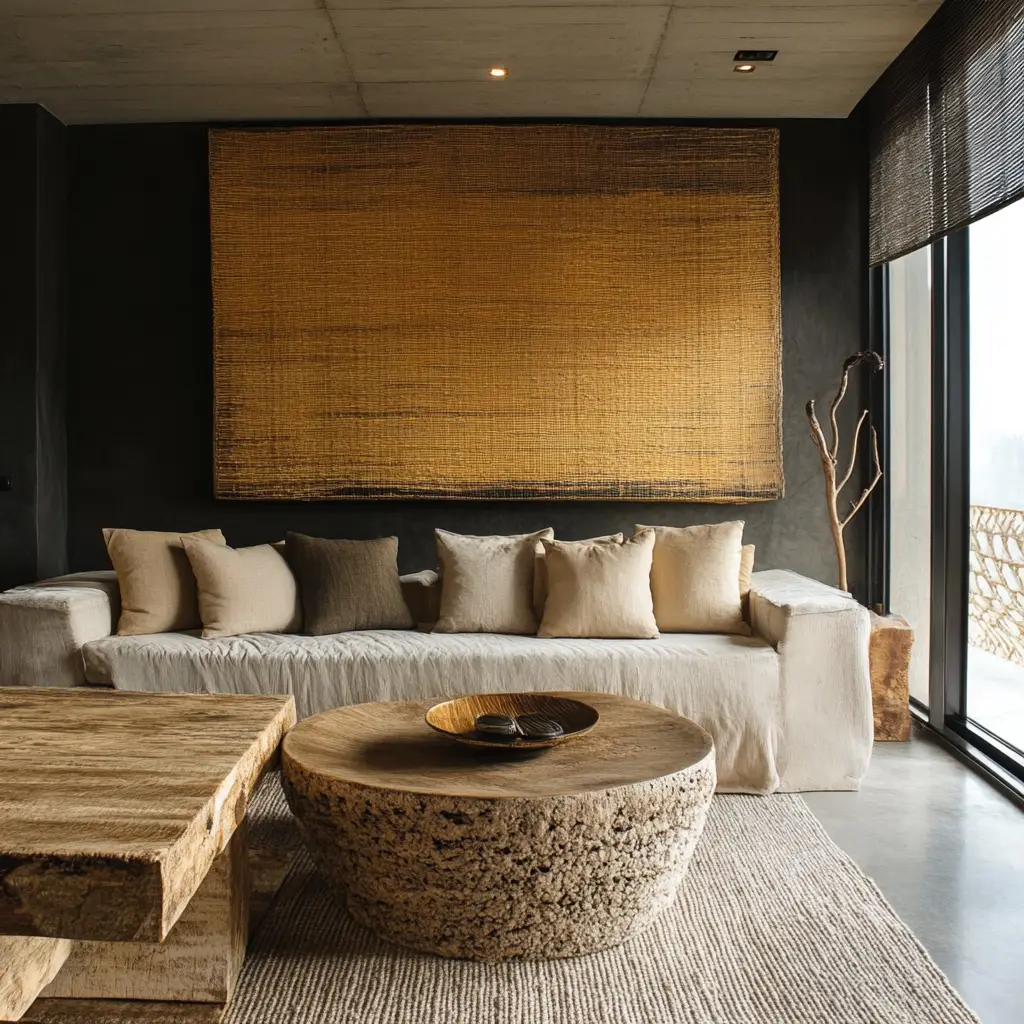
16. Bold Wallpapers
Wallpaper is back, but not in your grandmother’s floral sense. Today’s designs range from large-scale botanicals to geometric patterns and abstract art. Use it on a single wall to make a statement, or even on the ceiling for something unexpected. It’s a great way to add drama without permanent changes.
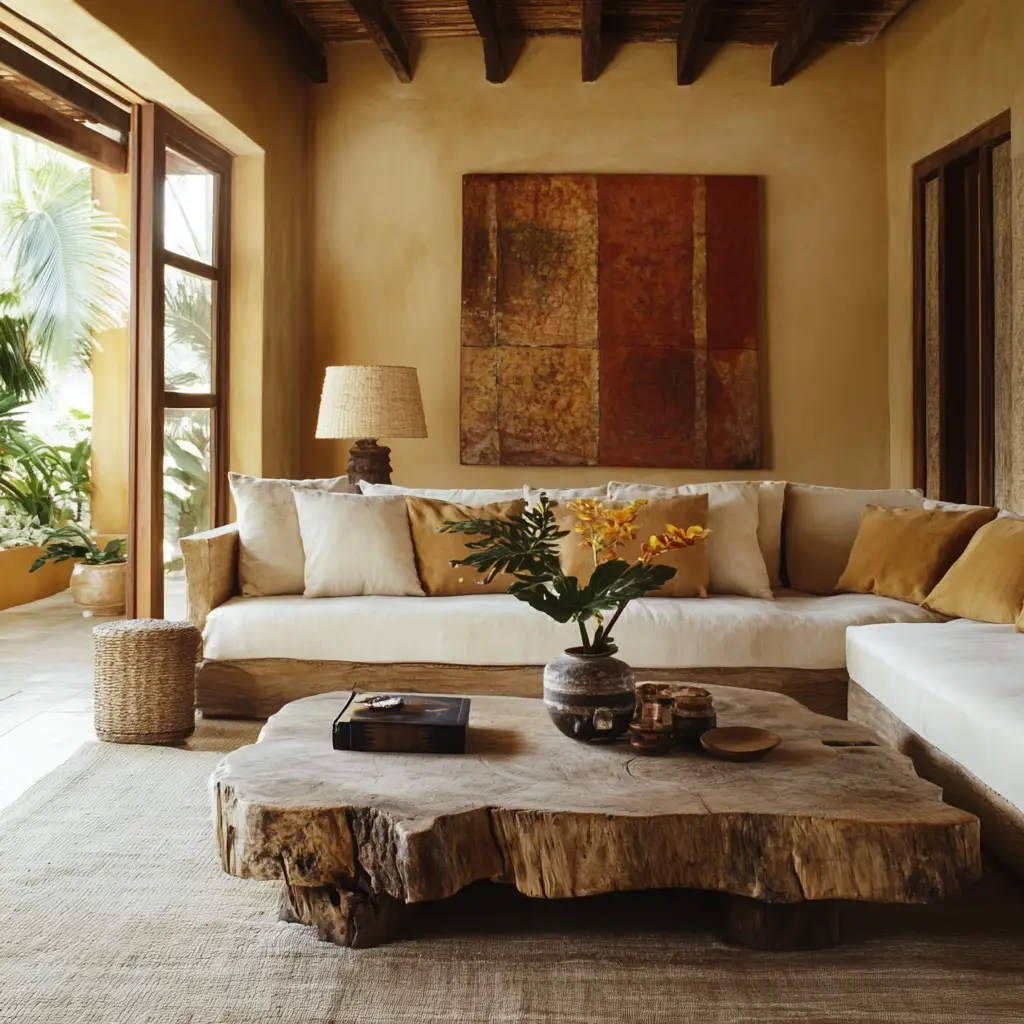
17. Indoor-Outdoor Living
More homes are embracing indoor-outdoor flow, especially in warm climates. Large glass doors, indoor plants, and furniture that works both inside and out help blur the boundaries. This approach brings in light, air, and a greater sense of space—perfect for both relaxation and entertaining.

18. Oversized Art Pieces
Instead of cluttered gallery walls, many are opting for one large artwork to serve as the room’s focal point. Whether it’s a canvas painting, a dramatic photograph, or textile art, oversized pieces make a powerful impact. Choose something you truly love—art that evokes emotion or tells your story.
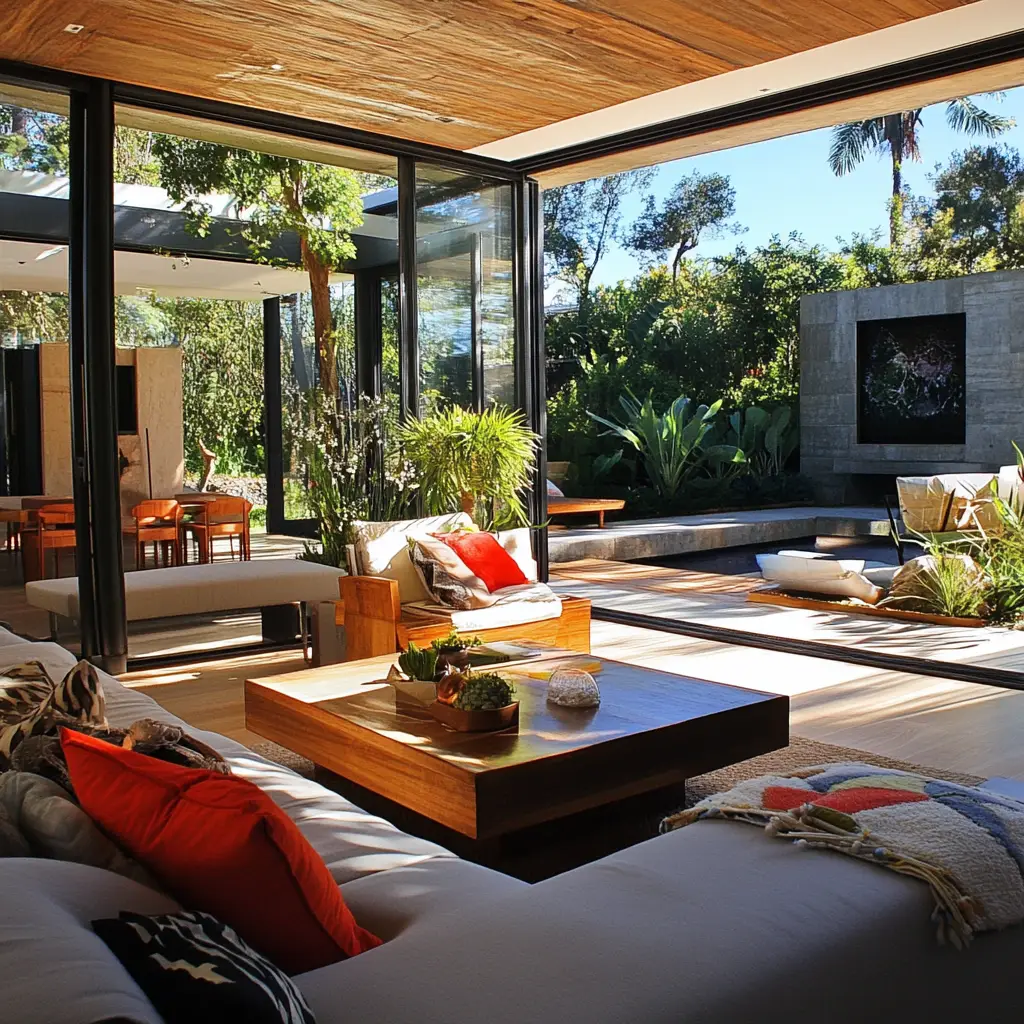
19. Modular Furniture
Modular furniture adapts to your life. Sectional sofas, stackable seating, and adjustable tables give you the freedom to change your layout as needed. Whether you’re hosting guests or just want a cozy reading corner, this flexibility ensures your living room grows with you.
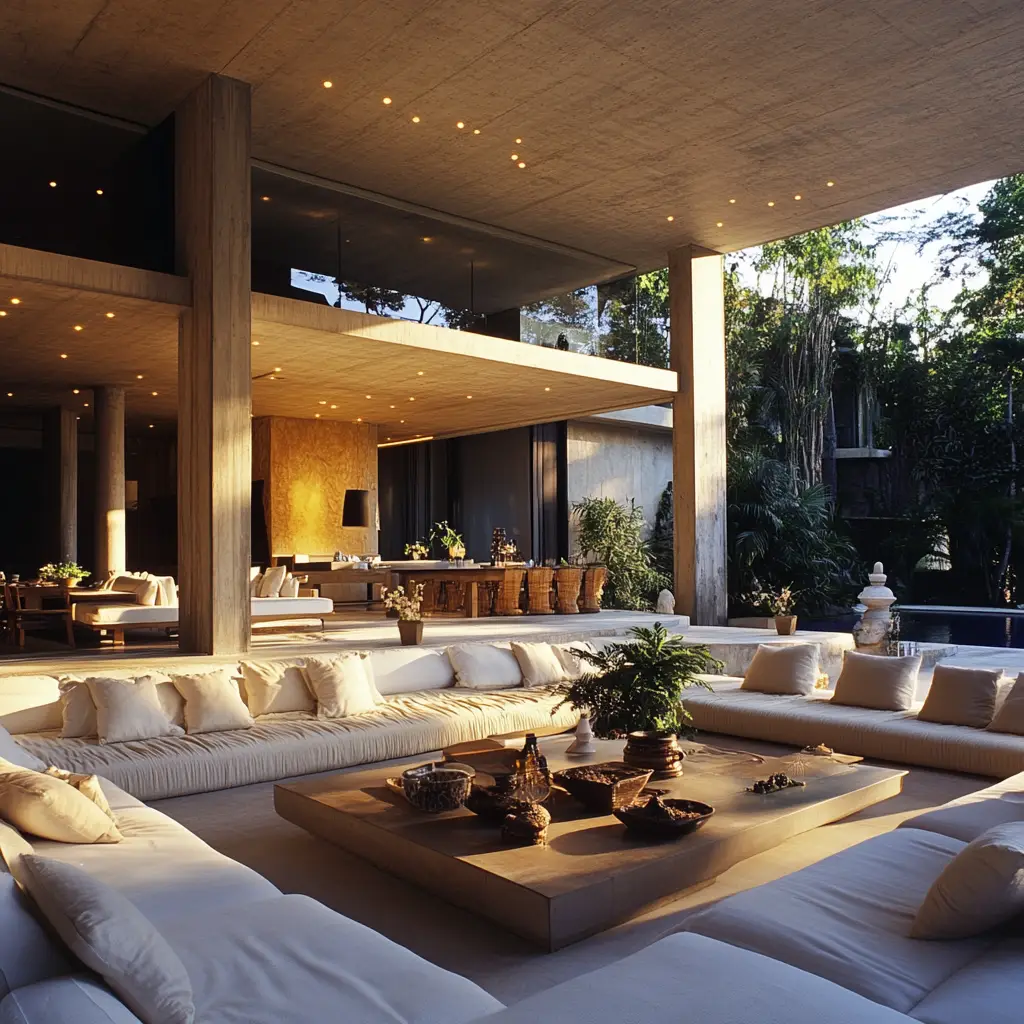
20. Personal Touches and Storytelling
The most memorable living rooms are deeply personal. Display your travel souvenirs, hang your kids’ art, or showcase family heirlooms. It’s these unique touches that make your home feel like yours. Design isn’t just about following trends—it’s about telling your story through your space.
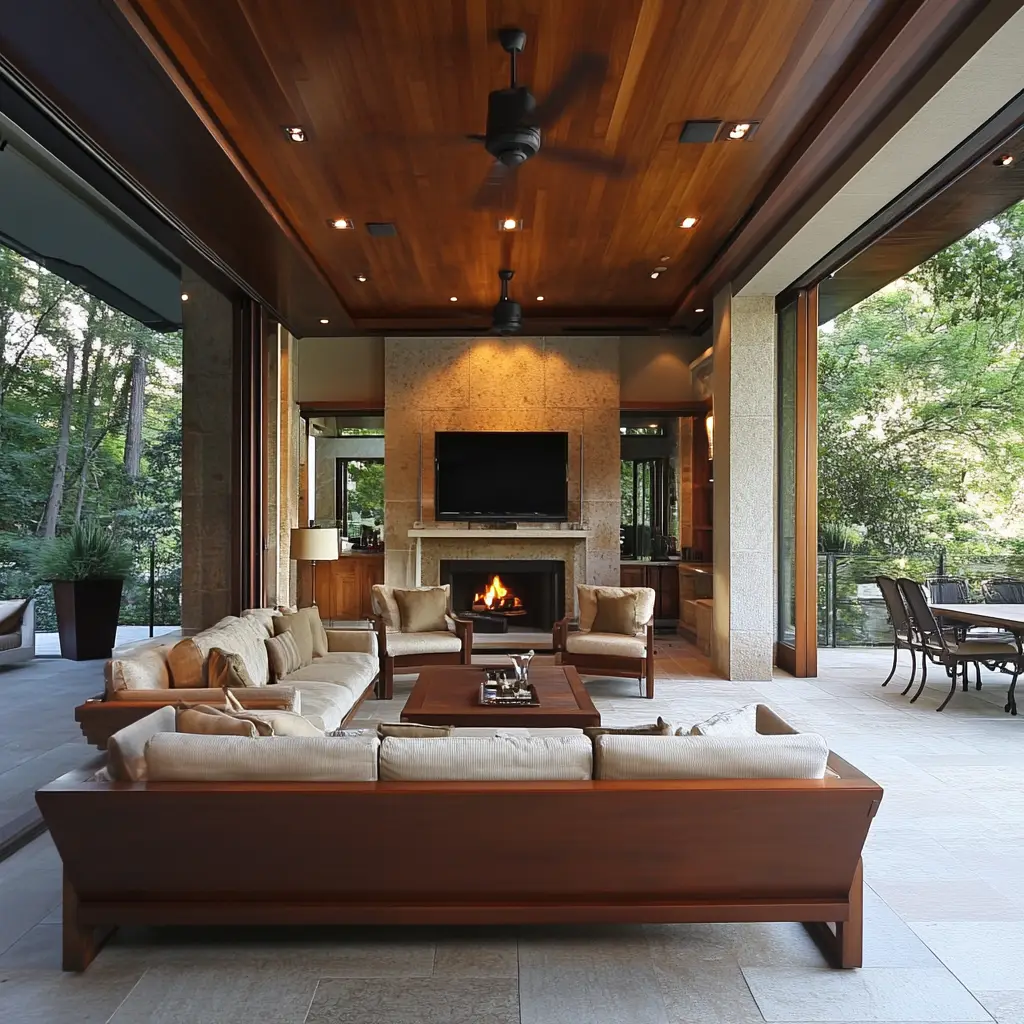
FAQs
How do I choose the best living room design for my home?
Start by assessing your needs—do you entertain often? Need a cozy space for family time? From there, think about what design elements make you feel most at ease. Your space should reflect both how you live and what you love.
Can I mix multiple design trends?
Definitely. The most interesting living rooms often blend different styles and eras. You can pair minimalist furniture with vintage accents or mix earthy tones with a moody feature wall. The key is cohesion—use a consistent color scheme or material to tie everything together.
What’s a cost-effective way to update my living room?
You don’t need a complete overhaul to refresh your space. Try rearranging your layout, painting a wall, or swapping in new cushions, throws, or lamps. Secondhand shops and online marketplaces are great for finding unique, affordable pieces.
Is it okay to use dark colors in a small living room?
Yes, but balance is crucial. Use mirrors to reflect light, and pair dark walls with lighter furniture and metallic accents. The contrast can actually make the room feel more dynamic and cozy rather than cramped.
What are the most timeless living room elements?
Natural materials like wood, leather, and linen, as well as neutral color palettes and functional layouts, rarely go out of style. Investing in quality basics provides a strong foundation, while trendier items can be layered in over time.
Conclusion
Creating a beautiful and functional living room in 2025 is about more than just following trends—it’s about crafting a space that feels like home. Whether you’re drawn to minimalist Japandi style, the cozy chaos of maximalism, or something entirely your own, the best designs are those that reflect who you are. Think about how you want to live, not just how you want things to look. After all, the best living rooms don’t just wow guests—they make you want to stay a little longer, every single day.
